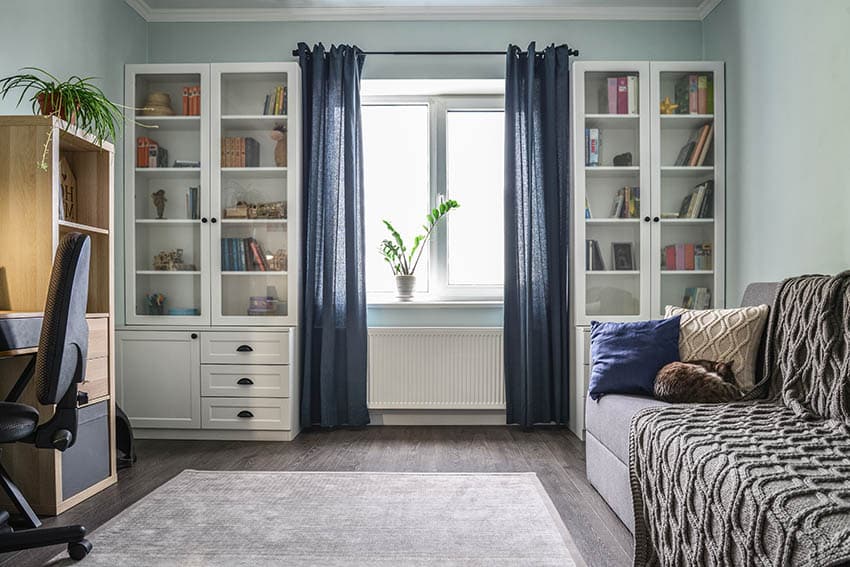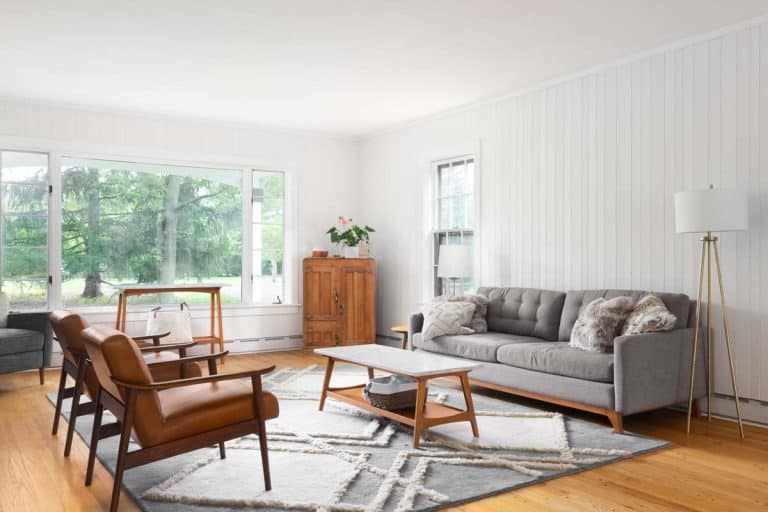Should Curtains Touch The Floor?
Should curtains touch the floor? Find the proper height to hang curtains from the floor in this curtain hanging guide.

Curtains. There’s something incredibly mundane about them, right? It’s perhaps one of the most common decorative pieces in every household.
The concept of hanging up a piece of fabric against the window to enhance the room’s aesthetic appeal or block the harsh sunlight is fairly commonplace. However, understanding the concept of curtain lengths is another matter.
The general rule here is pretty simple. If you want a more dignified or elegant look, then longer curtain lengths, preferably those that touch the floor, are the way to go. But, if you prefer to create a more relaxed or casual ambiance, then shorter curtains are actually much more recommended.
So you see, there really isn’t any right or wrong answer regarding curtain lengths. After all, it all depends on the homeowner’s preferences and specific design goals for the space they’re upgrading.
This particularly applies to the dressier rooms in the house, such as the living room, the formal dining room, any dens, office spaces, or even family rooms. They could all benefit from the remarkable look that floor-length curtains can lend to them.
Is It Ok If Curtains Don’t Touch The Floor?

In line with what we’ve discussed above, the short answer to this is yes. Still, short curtains aren’t really the best for aesthetics as nothing would beat the drama and effect that floor-length curtains could offer. Read more about our guide on how high to hang curtains here.
However, don’t underestimate short curtains as they can be a visual standout too, with a wide variety of interesting designs to choose from. But more than the aesthetic factor, short panels can be extremely functional as well. Here are a few examples:
Let’s say you have a kitchen window directly in front of the stove. In this case, it would be best to opt for short panels to prevent any fire hazard. The same thing goes for windows with radiators nearby.
You also have to factor in little children. They can pull and tug on lengthy curtains installed in playrooms and family rooms so it’s recommended to use short panels in this case.
Ultimately, there really is no real authority when it comes to the curtain lengths you should pick out for the windows in your home. As long as you get to achieve the look that you’re going for, like the fabric type and color of your choice, any curtain length should work just fine.
Moreover, as long as the window coverings have served their purpose like enhancing the beauty of the living space, then just decorate the space as you’d like and don’t overthink the design too much.
Meanwhile, aside from floor-length curtains, other length types include sill, apron, trouser, breaking, and puddle lengths.
Curtain Hanging Guidelines
Here are their typical measurements for different curtain styles to help you with your home decorating needs:
Sill – 0.5 inch above the window sill
Apron – 1 inch below the window apron
Trouser – 0.5 to 1 inch or more longer from the ground
Breaking – 2 inches or more from the floor
Puddle – 6 inches or longer from the floor
A good rule of thumb for hanging curtains is to hang them high and wide, which can enhance the look of your room and give it the appearance of being bigger. This means hanging curtains about 12 inches above the window frame and extending the rod about 3 to 6 inches beyond each side of the window.
By choosing a curtain rod that is longer than the window it allows the panels to be pulled completely to the side avoid obstructing any of the window views and help keep the space brighter.
another tip is to hang weights inside the curtain hems to help them hang straighter.
Visit this page about our design guide on the different types of curtains for more related content.






